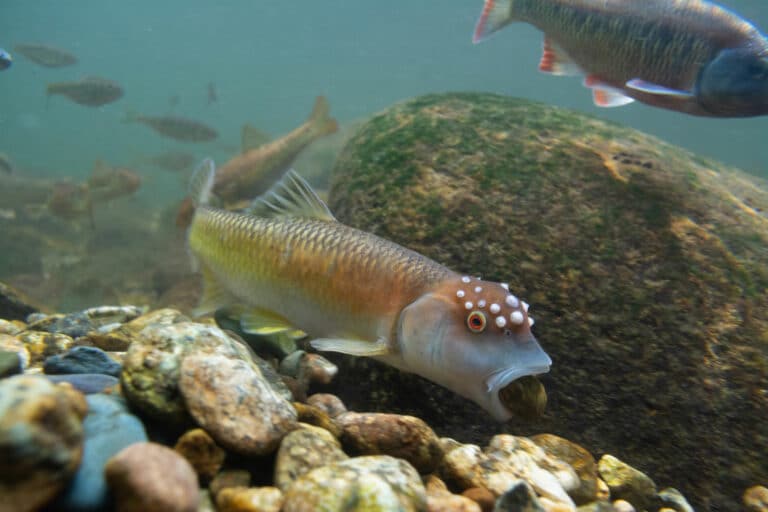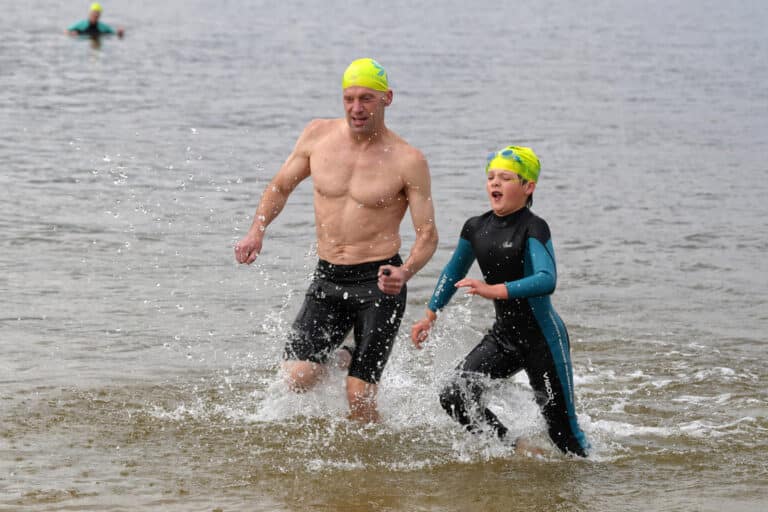by Jennifer Echols
<em>
“The air slams my face like we’ve fallen into an ice pond. We punch a big, long hole in the sky, falling 165 miles per hour…below, the ground rises rapidly, gleefully, to embrace us.”
-Atlanta Skydiver, Skydive the Farm</em>
“If you’re so inclined, now’s the time to pray,” booms our skydive instructor, Frank “The Tank” Avila. He yanks my harness so tightly that we are spooned together like a married couple. Under any other circumstance, I would blush. But Frank, I remind myself, is my lifeline for the next several minutes. I surrender to the experience.
Not everyone wants to jump out of a plane. Yet some of us do. Skydiving appeals to adventurers from the age of 18 (the minimum allowed) to over 80. And more women are getting into the sport than ever before, according to Rich Henderson at Skydive Atlanta in Thomaston, Ga., which-along with Skydive the Farm-is among the world’s Top 20 Drop Zones. Both are within an hour’s drive of downtown Atlanta.
The Saturday I visit Skydive Atlanta, Henderson is monitoring the Georgia Tech Skydiving Team’s dirt diving drills before they hit the sky. By day a warehouse manager, Henderson devotes his weekends to skydiving. He has completed more than 1,100 dives. Alongside Henderson is fun-jumper Kristin Albrecht, 25, who started skydiving when a friend bought her a gift certificate. Her first jump was a tandem with Henderson. Now in coach’s training, Albrecht has 270 jumps under her belt.
“It’s an amazing rush,” says Albrecht, who is a Saab sales associate during the work week. “But it’s also a time of intense focus. There’s no time to sit back and relax.”
Before leaving the hangar, I ask Henderson two questions I’ve always wondered about skydivers.
“Are there any secret societies?”
“BASE jumpers would be the closest thing to a secret society, he says. “Many skydivers won’t touch it-there are legal ramifications, including trespassing, to get to the jump site. The average BASE platform is 1,000 feet.”
Henderson admitted, though, that he is not immune to the call of the rush. He plans to join this “secret society” in October, when he does his first BASE jump on Bridge Day at New River Gorge, W. Va.
“Does anyone ever jump naked?”
“It’s very rare,” says Henderson, grinning. “I know a guy who announced he would jump naked for his 1,000th landmark jump. Anyone who jumped with him would have to go naked, too.”
His grin gets bigger. “The plane was full, and he was the only guy.”
My next stop is Skydive the Farm in Rockmart, west of Atlanta, where I’m planning to actually jump myself.
As I pull up to the hangar, I’m greeted by Hans Paulson, 37, who owns and runs The Farm with his wife, Sandy. Paulson placed fourth in the Skydiving World Cup Competition in Perris Valley, California. in 2003. He hopes to get a berth on the U.S. Olympic Team when swooping becomes a pre-Olympic competition.
Repeat skydivers are a rare bird. There are fewer than 35,000 licensed skydivers in the United States. Out of 100 people who jump tandem, maybe one or two come back for a second jump. This will be my second jump; my first was in 1985.
As we wait to ride to the airport, I ask some of the jumpers why they do it. “Most people are living to die,” one says. “We’re dying to live.”
Up in the plane, it’s time to live. Before we crabwalk to the exit, everyone passes hands up and down, tapping fingers to palms, like an ancient rite. “We are family,” says Frank the Tank. “We want everyone to have a safe jump, a good experience. This is our way of showing the love.”
At the hatch, jumpers allow the wind to pluck them away in singles, doubles, and triples. Some fall forward and out. Some circle around and hang onto the edge, releasing their grip to the wind. Leslie Thomas, Frank’s girlfriend, exits in a formation. She and her partner rise to their knees, grab each other at the elbows and fall out sideways. Witnessing this graceful dance is a pleasant surprise.
During ground instruction, Frank had told me what to expect. “At the hatch, grab your chest straps. When we leave the plane, you’ll thrust your hips out and put your feet up and back. When I tap your sides, you’ll let go of your straps and let your arms flop loosely in front.”
On the edge of the Cessna, Frank plans our exit while I admire the view. At that moment the plane feels like the only seriously solid surface in the world. The patchwork topography of semi-rural Georgia is a bit warped, Dali-esque, as cold air grabs my breath and fuzzes my vision. But the butterflies are gone; my blood has stopped racing. While waiting for that last push, I release every last one of my controlling urges to fate and to Frank, my flying zen master.
We jump.
I’d like to report to you that the freefall phase is sublime, that you feel like you’re falling softly like a petal, perhaps that you see the gently smiling face of your maker.
Screw that thought. The air slams my face like we’ve fallen into an ice pond. We punch a big, long hole in the sky, falling anywhere from 120 to 165 miles per hour, who knows for sure? I’m supposed to look up at the horizon, but all I can do is look down at the ground. It rises rapidly, gleefully, to embrace us.
Frank spins us around like we’re on a turntable, scouting the distant Atlanta skyline. I’m near panic, queasy and smiling so broadly I’m going to catch a bird in my teeth. What a rush!
After about a minute, 10,000 feet closer to earth, Frank pops the ripcord and loosens the harness. We float. Generous currents and Frank’s skill allows us some extra time under the canopy. “This chute is like wings,” he says.
New chutes penetrate the wind faster than they did 20 years ago. Design modifications and new fabrics allow faster speeds, cross-bracing, and greater control. Most contain an on-board computer chip with an automatic activation device that will deploy the reserve in an emergency. Not once do I feel in danger.
I soar with Frank for three or more minutes, enjoying the view and everything airborne. The landing is gentle. For a long time after, days even, it feels like we’ve danced on the head of a pin.







